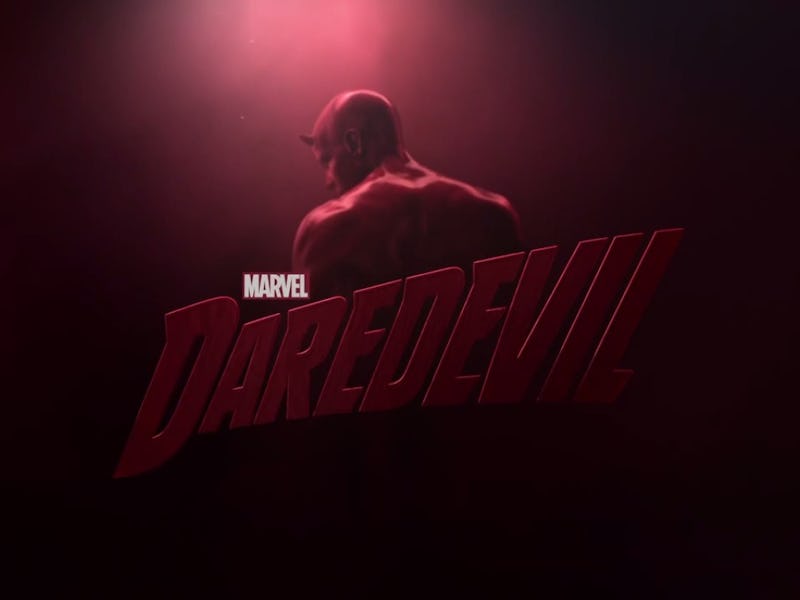Breaking Down the One-Shot Fight Scenes in Netflix’s ‘Daredevil’
You love the long take fights from ‘Daredevil,’ but you can miss their true brilliance if you’re not paying very close attention.

Another new season of TV’s best superhero is upon us. And yet again, Daredevil’s producers have gifted fans another spectacular, long-take fight scene to salivate over. After last season’s now famous one-shot hallway fight scene, the series’ new showrunners, Doug Petrie and Marco Ramirez, must have felt obligated to deliver an homage — and if that’s the case, they can rest easy knowing that their version is a worthy successor.
Petrie and Ramirez didn’t simply put Daredevil (Charlie Cox) into an even hairier situation with even crazier odds and have him beat the crap out of even more dudes. Instead, they used the context to craft a shot that — while undeniably kick-ass — is also a complex construction that’s deeper than bone-crunching violence.
The Purpose of the Long Take
The long take has a storied history in Hollywood. It’s an incredibly splashy and complicated maneuver to pull off, but when done well, it can lend a sense of realism and tension to films, transplanting the audience from their comfortable surroundings and into the action. One of the best (and maybe most racially questionable) examples of this technique is the opening shot in Orson Welles’s masterpiece, Touch of Evil.
The expertly executed crane shot is one of the most memorable in Hollywood, as it sets the stage for the events to come, yet also giving the audience a firm grasp of the characters’ surroundings. This shot is captivating, and also grants the audience a firm understanding of the narrative — all before anyone speaks a line.
That’s what a long take is for, and it’s extremely clear that Daredevil’s producers understand that. Because they’re doing more than just entertaining you with a some sweet choreography.
The Hallway Fight Scene
At the tail end of Daredevil’s second episode, “The Cut Man,” our intrepid hero has tracked down the bunch of Russian gangsters who kidnapped a young boy from his father’s car.
It’s been a seriously long night for Matt Murdock. He’s been beaten mercilessly, thrown into a dumpster, and one of his lungs has collapsed. Yet, at the end of that whole ordeal, the Devil of Hell’s Kitchen manages to pick himself back up and go kick the right asses. Which brings us to this hallway:
As Daredevil works his way through a whole squad of Russian goons, the camera’s slow, sure movements parallel our hero’s sense of conviction. Though he’s plainly exhausted, Daredevil is a man on a mission.
That sense of purpose is mirrored not only in the camera’s confident, yet sluggish movements, but in the actual setting of the fight. Daredevil has a clearly defined goal and it’s set at the end of a straight stretch of hallway.
That sense of moral righteousness, by comparison, is nowhere to be found in this season’s long take.
The Stairwell Fight Scene
“New York’s Finest,” the third episode of Daredevil’s second season, once again finds Matt at a disadvantage. This time, though, he’s been chained to a brick column and subjected to forty minutes of philosophical debate at the hands of the Punisher. The general thrust of their disagreement: the Punisher believes that Daredevil’s mercy is a half-measure. What’s worse, the flat-topped killer actually makes some good points.
A few minutes later (after a crazy intense Mexican-style standoff), Daredevil finds himself staring down an army of pissed off bikers with no backup, save an empty gun taped to one hand and a length of chain taped to the other.
This year’s Daredevil is not only better outfitted, but he’s also a year wiser. It’s very clear that he’s spent the intervening year getting tons of practice knocking teeth out. The stairwell fight scene has the superhero tackling more foes not because “it’s the second one so it needs to be bigger,” but because he’s a more lethal combatant.
Daredevil is also in a state of moral flux as the Punisher’s words still ring in his ears. He’s forced to confront the the reality that his tactics for cleaning the streets are temporary and that his one-man war on crime may ultimately be for nothing. As a result, he’s battling an onslaught of people (most of whom are equipped with deadly weapons) and descending through a winding, labyrinthine staircase.
His mission is no longer about search and rescue as it was last season. This Matt Murdock is embroiled in a philosophical bout with a worthy adversary. His descent into this murky ethical territory is highlighted by the broken lights and dim hallways through which he travels.
As fight choreographer Phil Silvera put it, “Last year, that hallway fight, he was tired, already beaten, broken, hurt, but he comes through to save this child. Here, this is more — as the showrunners describe it — more of a descent into hell.”
All In All, It’s a Good Sign
Even if you’re the kind of viewer who doesn’t give a shit about subtext and just tunes in for the awesome choreography, then there’s still something to love about these long-take fights beyond the violence. Even a cursory glance at the two fight scenes demonstrates Netflix’s confidence in their flagship Marvel property. That same sense of confidence is clearly shared by the showrunners, who make great use of extremely complex camera movements and choreography, despite the frantic schedule, which was no different than last season.
If nothing else, this year’s iteration of the long take fight scene is a clear indicator that Daredevil’s handlers have a lot of stake in his talent and in his future.